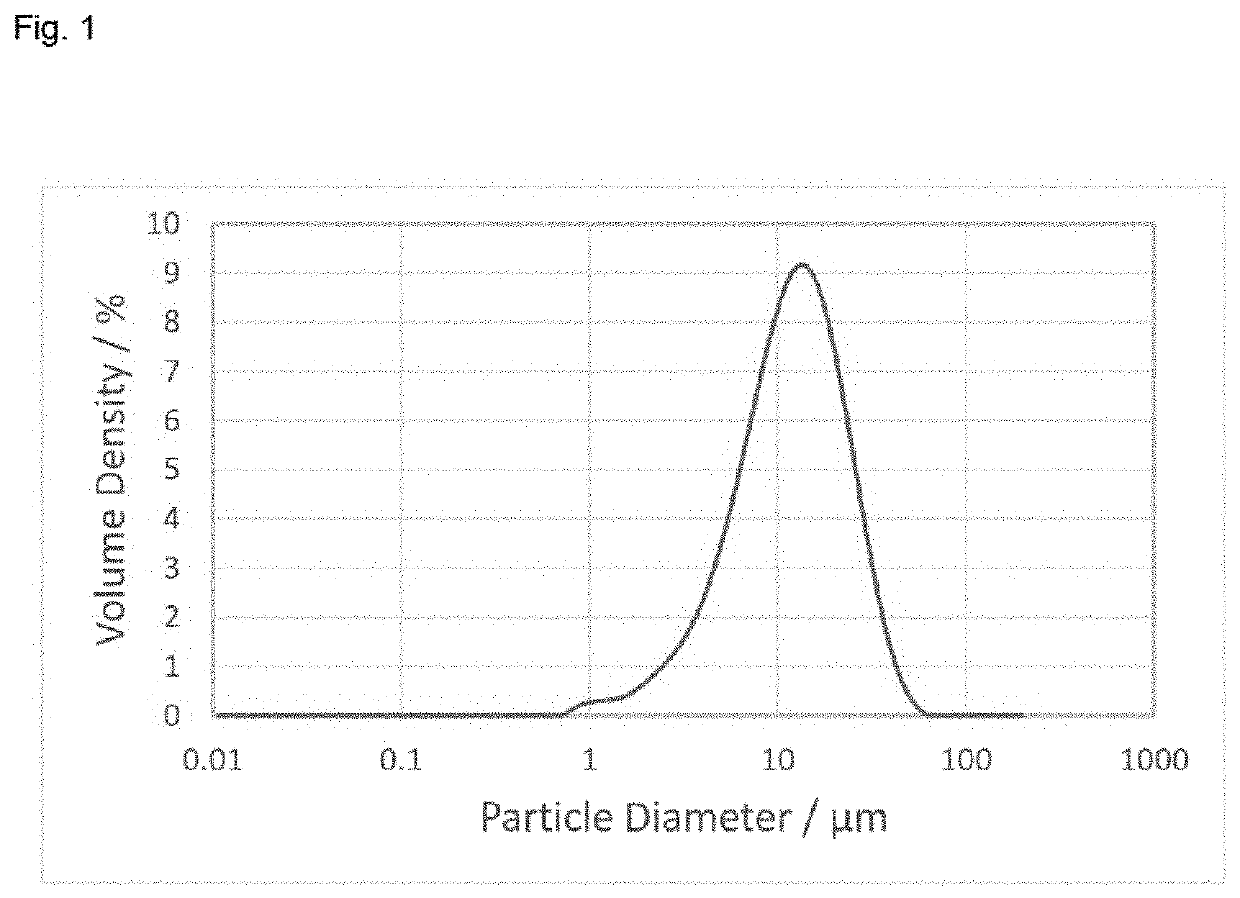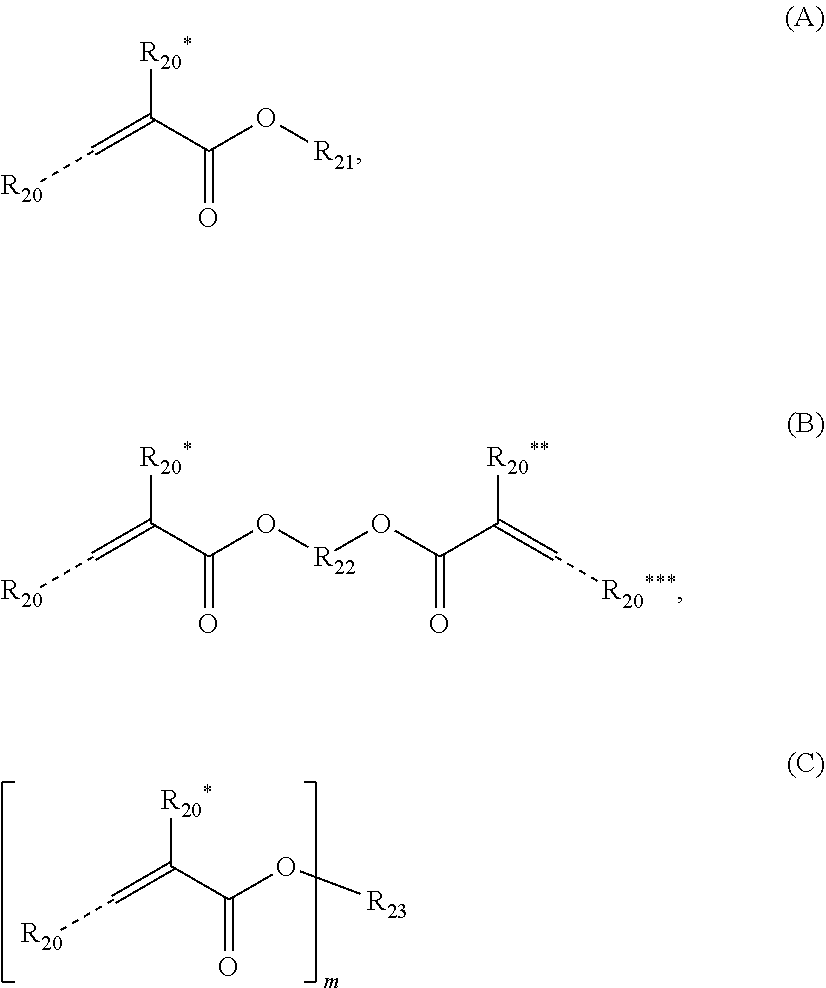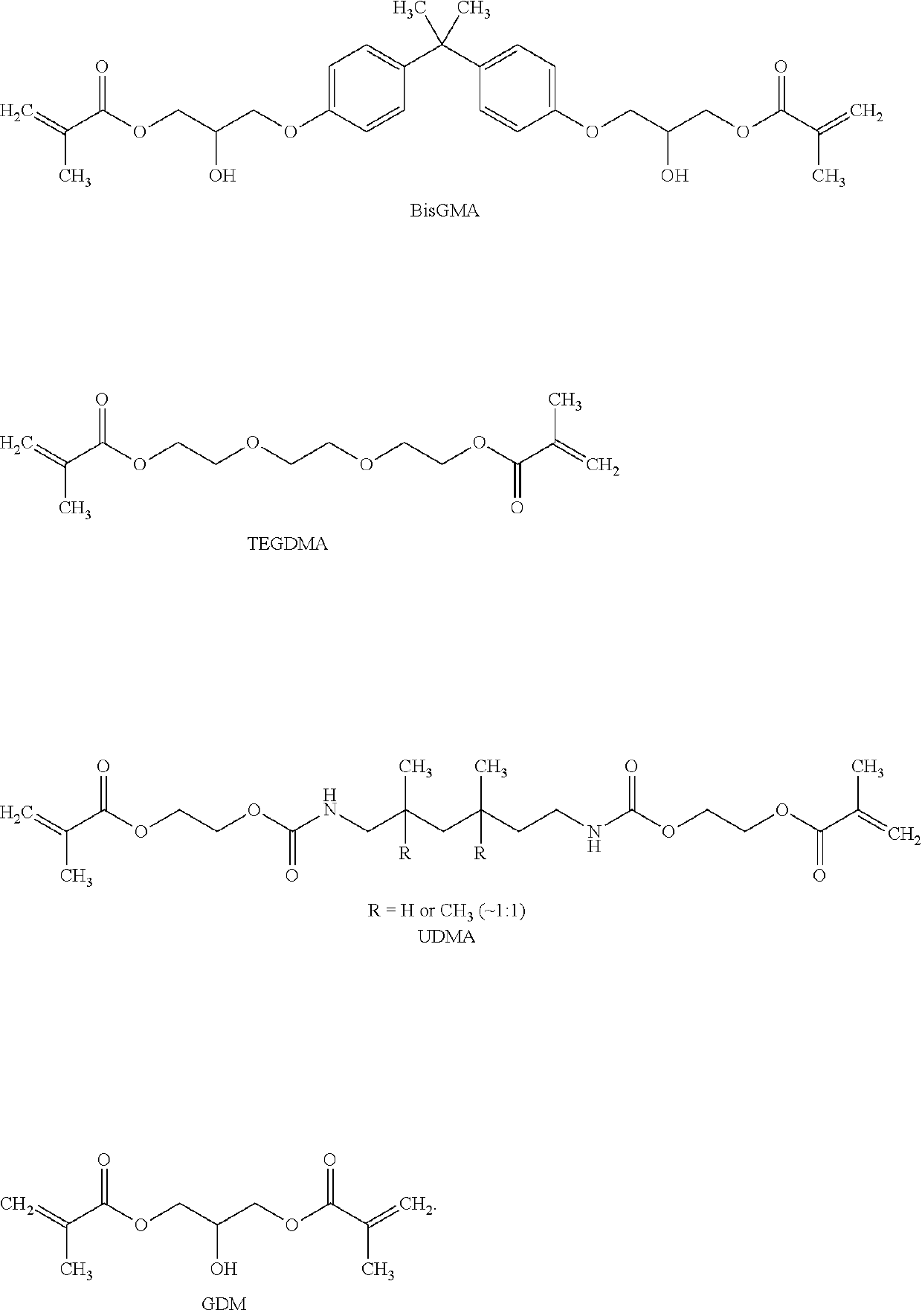Additive manufacturing process
a manufacturing process and additive technology, applied in the field of additive manufacturing process, can solve the problems of high dental prosthesis cost, high maintenance cost, and high cost of computer-controlled milling and grinding machines, and achieve the effects of low viscosity, high cohesive strength or slump resistance, and increased printing rate of curable compositions
- Summary
- Abstract
- Description
- Claims
- Application Information
AI Technical Summary
Benefits of technology
Problems solved by technology
Method used
Image
Examples
examples
[0240]Milling of Glassflakes by Means of Pearl Mill:
[0241]The grinding container of the mill (Dyno-mill Multi Lab, Willy A. Bachofen AG Maschinenfabrik) was filled with 450 mL grinding beads (soda-lime glass, 0.75-1 mm). In a storage tank 100 g ECR glassflakes GF350nmM (from Glassflake Ltd., Leeds, England) without surface functionalization were dispersed in 1.5 L water. A homogeneous dispersion was maintained by continuous stirring. The dispersion was pumped by a peristaltic pump into the grinding container and returned from the mill outlet into the storage tank. Milling was stopped once the particle diameter D3,50 and D3,99 reached the desired values.
[0242]Washing of Glassflakes:
[0243]When adding unwashed glassflakes into a dental composition, greyish pastes were obtained. For better aesthetical results, the glassflakes may be washed prior to coating. For washing, the glassflakes may be stirred in twice the amount of 2.5% hydrochloric acid for half an hour, and then filtered off a...
PUM
| Property | Measurement | Unit |
|---|---|---|
| diameter D3 | aaaaa | aaaaa |
| particle diameter | aaaaa | aaaaa |
| diameter | aaaaa | aaaaa |
Abstract
Description
Claims
Application Information
 Login to View More
Login to View More - R&D
- Intellectual Property
- Life Sciences
- Materials
- Tech Scout
- Unparalleled Data Quality
- Higher Quality Content
- 60% Fewer Hallucinations
Browse by: Latest US Patents, China's latest patents, Technical Efficacy Thesaurus, Application Domain, Technology Topic, Popular Technical Reports.
© 2025 PatSnap. All rights reserved.Legal|Privacy policy|Modern Slavery Act Transparency Statement|Sitemap|About US| Contact US: help@patsnap.com



